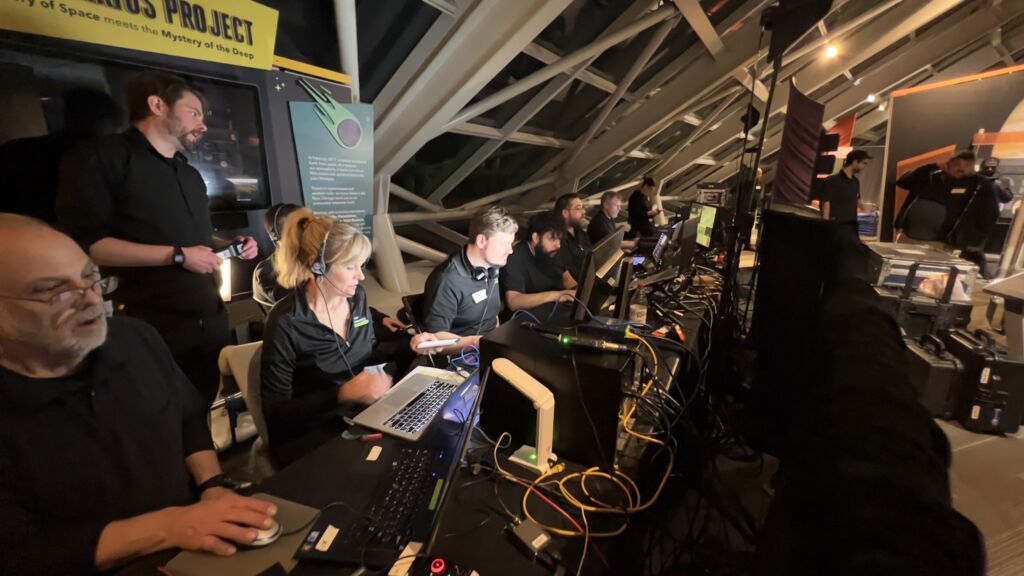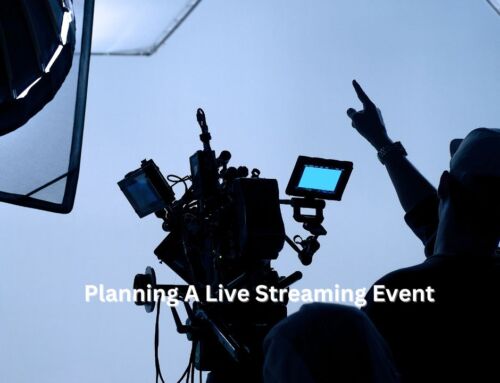
What is Live Streaming? A Short Guide
Live streaming is technology that allows anyone to broadcast content live on the internet. It’s an interactive and engaging way for people any where in the world to connect online. Though tv stations began broadcasting live decades ago, today’s technology allows any organization or individual to go live. What’s more, the event isn’t one-way communication but two-way communication creating live interaction. Social media sites like Twitch, Facebook, and YouTube quickly integrated live streaming because the technology is powerful in creating engagement and in building communities and connections. These platforms recognized the incredible potential of live streaming years ago.
Whether it’s a corporate town hall meeting, an investment conference, a product launch, or a class, live streaming is bringing people together to share experiences. Because it is live and therefore immediate, it’s more authentic than a recorded video. Viewers know what they are seeing is real and unedited. This article will explain how it works and how people and organizations are using it.
What is Live Streaming?
Live streaming is simply the process of broadcasting video and audio to the internet. Much like tv stations transmit images to televisions, any one can live stream online. So, now, everyone can be a broadcaster. Because live streaming is dynamic and immediate, it’s becoming popular for large organizations as well as for groups of friends. Whether the audience is large or small, it’s always about bringing people together to share experiences.
How Does Live Streaming Work?
Live streaming involves five components:
- Content Creation: The first step in live streaming is deciding what the content will be. It could be simply a person talking on a cell phone camera or it could be three cameras and a PowerPoint presentation for a corporate town hall. Live streaming can be just like a television show with 20 cameras broadcasting a concert or sporting event.
- Encoding: As the content is produced, it has to be converted to a digital format for transmission over the internet. Encoding is the term used for this conversion. The video and audio data are compressed and converted into a streamable format, often using software programs like Vmix, Livestream Studio, or OBS Studio, or hardware encoders. RTMP links are used in this process. Real-time messaging protocol is what RTMP stands for. It provides for stable transmission of audio, video, and data from an encoder to a server, which brings us to the next component.
- Streaming Server: The encoded data is sent to a streaming server, which acts as a hub to distribute the live broadcast to viewers. Platforms like Vimeo, YouTube, Twitch, Facebook Live, and others host these servers, allowing streamers to reach a wide audience and engage on their platforms.
- Content Delivery Network (CDN): A Content Delivery Network or CDN is a network of servers located around the globe. The end user will see the broadcast via a server located nearby. This geographical targeting allows for a stream that is delivered quickly and smoothly rather than experiencing delays or buffering.
- Viewing: Viewers can watch the live stream on their phone, tablet, or laptop. There may be a 30 second or so delay, but all the viewers see the content at the same time. They can interact with it as well, making comments or asking questions. Platforms like Zoom and Teams meetings don’t have a delay and offer the chance to ask questions live or be part of the broadcast such as presenting during the event. These platforms are also used to “bring in a remote speaker” and broadcast to a Vimeo or YouTube link.
Applications of Live Streaming
Live streaming is being used in many ways by organizations all over the world.
- Entertainment: Live streaming is incredibly entertaining. For instance, Twitch, a live streaming gaming platform has millions of gamers connecting everyday. Many musicians also use live streaming to reach a greater audience through online concerts.
- Education: From schools to live online courses, people are learning in an interactive environment, which allows for immediate answers to questions. College and Universities are connecting with students all over the world through live streaming. In addition, companies and associations offer webinars as well as continuing education courses to help people who might not otherwise attend a class.
- Corporate Communications: Authenticity is a big part of corporate culture. Live Streaming offers corporations the chance to connect with associates in a truly authentic and engaging way. Recording a video and then sending it out to employees doesn’t allow people to experience the event together, and viewers know the video can be edited. Live streaming also gives overseas associates a chance to see town hall meetings and investor conferences at the same time as those in the corporate office.
- Business and Marketing: Companies leverage live streaming for webinars, hybrid events, investor meetings, product launches, and brand promotions. It enables businesses to engage with their audience in real-time and get immediate reactions, questions, and feedback.
- Social Media: Social media platforms like Facebook, Instagram, YouTube, LinkedIn, and TikTok have integrated live streaming because it keeps people on the platforms longer. People tend to watch live streams three times longer than they watch a pre-recorded video, according to Facebook IQ. For years associations streamed award ceremonies but had little interaction. Now, with platforms like Facebook, the audience immediately reacts by liking the video and making comments during the broadcast. Live streaming allows for engagement and interaction. It enables users to share real-time experiences with their followers.
One popular trend is live question and answer sessions. Viewers often watch a presentation and then ask questions. Whether it’s a behind-the-scenes look or a casual chat, live streaming is a staple of social media engagement. Some companies use their live broadcast as a means to create video content. For instance, Cole’s Wild Bird Products, a national bird seed company broadcast a half hour Q and A event on Facebook and then edits 10 or so videos from the event and uploads those videos to its youtube.com channel. - News and Events: News organizations and event organizers use live streaming to broadcast breaking news, press conferences, and live events. This allows viewers to stay informed and participate in significant issues and events as they unfold. In fact, in Georgia, an online press conference by Black Americans For A Better Future protesting a boycott at the state capitol reached 750k viewers when it was shared “live” by large news organizations on Facebook.
The Future of Live Streaming
As technology continues to advance, the future of live streaming looks promising. With the rise of 5G networks, live streaming is expected to become more popular, and as it does, look for even more immersive and interactive experiences. As more people and businesses recognize the value of live streaming, expect to see continued growth and innovation in the industry.
Conclusion
Live streaming has transformed the way we live, communicate, and share content in the digital age. The ability to connect live is now an essential technology for entertainment, education, business, and beyond. Think of all the opportunities available through live streaming. Many people are able to work from home but “connect” through live meetings, which enhances their lives. Want to learn something new that could lead to a new career or enhance your present one? Simply find live courses through associations, colleges, or experts. If you run a business, consider how you can connect with potential clients online. Whether it’s a Facebook question and answer or developing a course online, are there people who need your services or who could learn from you? If you are a marketer or corporate communications executive, are you using live streaming to connect with your target audience or internal team? The impact of live streaming on every aspect of our lives will only continue to grow and create new and exciting experiences.




